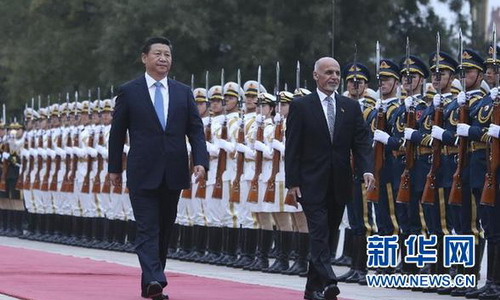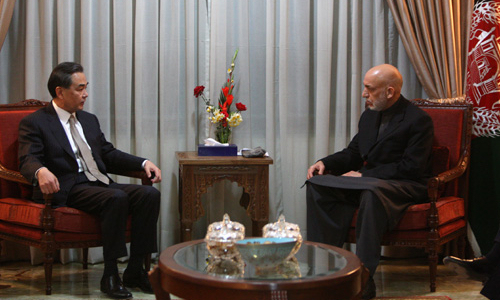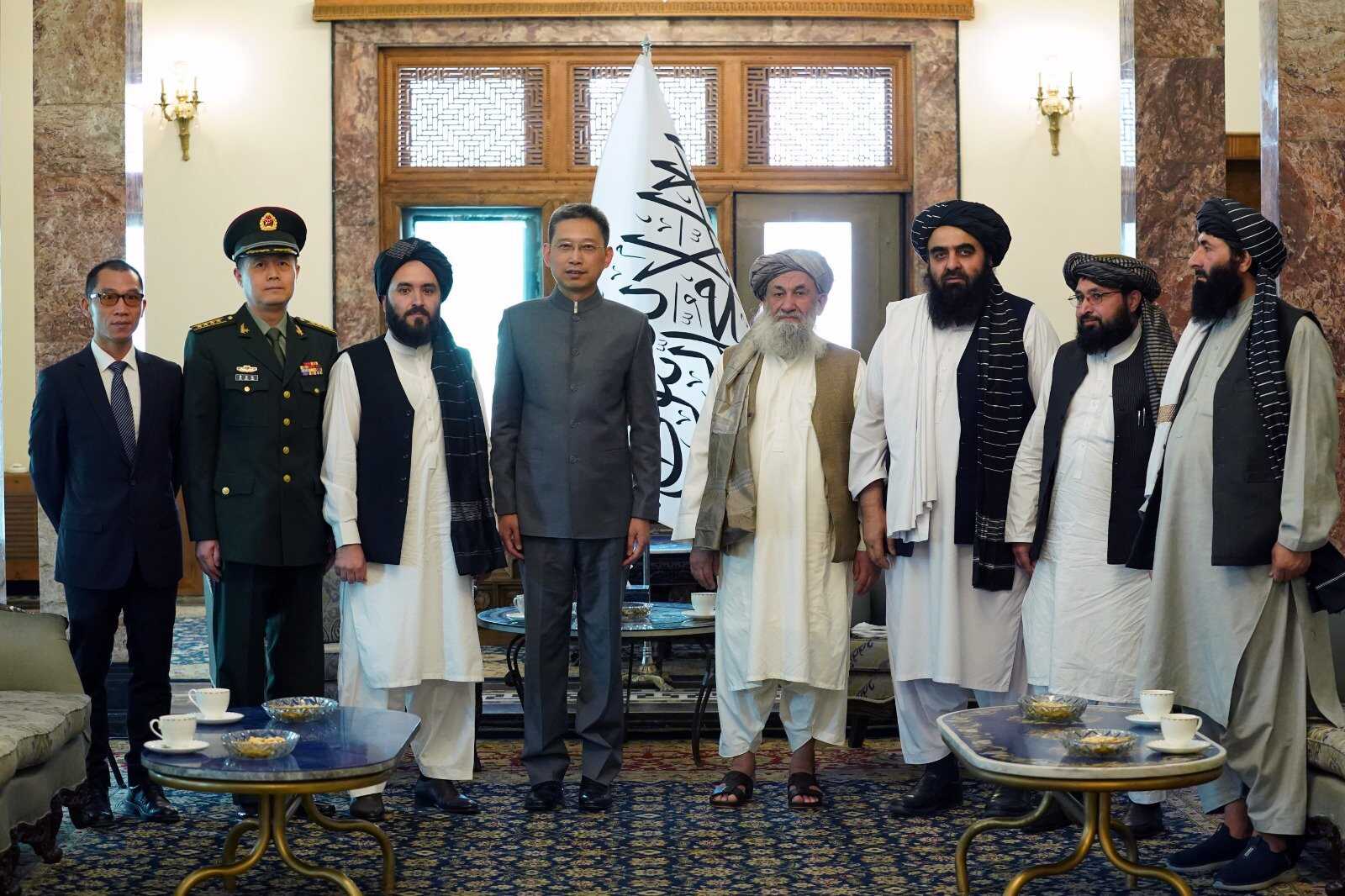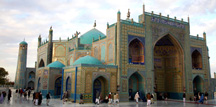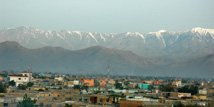The Belt and Road Initiative belongs to the world, including Afghanistan!
Dr. Zhao Haihan, Chargé d'Affaires of the Chinese Embassy in Afghanistan

Ten years ago, President Xi Jinping unveiled the Belt and Road Initiative during his visits to Central Asia and Southeast Asian countries. The international cooperation practice over the past decade has fully demonstrated that the Belt and Road Initiative conforms to the historical trend of economic globalization and meets the requirements of global governance system reform. It has maintained strong resilience and vitality, continuously creating development opportunities and positive outcomes for the world.
Firstly, a new paradigm of international cooperation has been solidly promoted. In today's era of accelerating changes in the global landscape, humanity is facing unprecedented common challenges such as deficits in peace, development, security, and governance. To address these challenges, China has advocated incorporating the core principles of jointly building the Belt and Road Initiative and achieving shared benefits through consultation and collaboration into relevant documents of the United Nations, G20, Asia-Pacific Economic Cooperation, and other regional organizations. China has also proposed in succession the Global Development Initiative, Global Security Initiative, and Global Civilization Initiative. All of these initiatives revolve around a common idea: promoting the building of a community with a shared future for mankind.
Today, the Belt and Road Initiative has become an open and global platform for cooperation that transcends geographical limitations, breaks through cultural differences, and integrates development needs. It covers two-thirds of the countries in the world and one-third of international organizations, driving the formation of a new paradigm of international cooperation and increasingly generating positive effects. In this new and vast international system, China is also expanding its scope, broadening its fields, and deepening its opening-up to the outside world.
Secondly, there has been fruitful mutual beneficial cooperation on a global scale. As of now, China has signed over 200 cooperation agreements on jointly building the Belt and Road Initiative with 151 countries and 32 international organizations. This has led to more than 3,000 cooperation projects, with a total investment of nearly $1 trillion, creating 420,000 job opportunities for countries along the routes and lifting nearly 40 million people out of poverty. Key projects such as the China-Pakistan Economic Corridor, China-Laos Railway, and Hungary-Serbia Railway have made steady progress in construction and operation, while numerous small-scale but impactful projects in agriculture, healthcare, poverty alleviation, and other livelihood areas have been implemented one after another.
According to a World Bank report, the Belt and Road Initiative has contributed to a 4.1% increase in trade among participating countries, a 5% increase in foreign direct investment, and a 3.4% increase in the GDP of low-income countries. Benefiting from the Belt and Road construction, from 2012 to 2021, the share of GDP accounted for by emerging and developing economies increased by 3.6%. The World Bank estimates that by 2030, the Belt and Road Initiative will have generated annual benefits of $1.6 trillion for the global economy, accounting for 1.3% of global GDP.
More importantly, the Belt and Road Initiative is embarking on a new journey of high-quality development. Today, it has become a popular international public good and the world's largest livelihood project. 2023 marks the tenth anniversary of China's proposal of the Belt and Road Initiative. In the new decade, China will take the opportunity of hosting the third Belt and Road International Cooperation Forum to jointly summarize achievements, outline blueprints, and make the development belt that brings benefits to the world more prosperous and the path to happiness for humanity broader. China will strive for higher-quality development in the Belt and Road Initiative together with countries around the world.
The Belt and Road Initiative originates from China, but the opportunities and outcomes belong to the world. There is a saying in China, "Those closer to the water get the moon first." As an important neighbor of China, Afghanistan can fully integrate into the Belt and Road construction and share development opportunities and outcomes.
Afghanistan has been an important transportation hub and trading center on the Silk Road since ancient times. The Wakhan Corridor is like a big hand extended by Afghanistan, tightly connecting China and Afghanistan. For thousands of years, the peoples, goods, and cultures of China and Afghanistan have been flowing back and forth through this Silk Road, jointly creating a long history of exchange between the two countries as friendly neighbors.
Afghanistan today is an important country along the Belt and Road Initiative. China and Afghanistan reached a consensus on jointly building the Belt and Road Initiative as early as 2016, as stated in a joint declaration. Recently, H.E. Mawlawi Abdul Kabir, the Acting Deputy Prime Minister of Afghanistan's government, reiterated during his speech at the opening ceremony of the 7th China-South Asia Expo that China has always been a reliable political and commercial partner for Afghanistan, and a true friend of the Afghan people. Afghanistan supports the Belt and Road Initiative, and it is prepared to join the China-Pakistan Economic Corridor, looking forward to practical cooperation with China on Belt and Road projects.
China and Afghanistan share similar historical experiences and development interests. In the process of seeking common development and promoting regional prosperity, China needs Afghanistan, and Afghanistan also needs China. There are enormous prospects for mutually beneficial cooperation between the two countries. Afghan products are highly popular in China. Just a few days ago, one of my colleagues returned to China on vacation, and his luggage was filled with Afghan carpets, saffron, pine nuts, and lapis lazuli handicrafts. On the other hand, China's capabilities and experiences in infrastructure, manufacturing, new energy industries, and more can provide strong assistance to Afghanistan in areas such as connectivity, resource and energy development, and information technology construction.
I believe that as the post-war reconstruction in Afghanistan progresses, the cooperation potential between China and Afghanistan under the framework of the Belt and Road Initiative will continue to be activated, and practical cooperation achievements in various fields will be further enhanced. Afghanistan's geographical and resource advantages as well as development potential will also be further highlighted in the process of jointly pursuing the Belt and Road Initiative, showcasing once again its brilliance of being the "crossroad of Eurasia" and the "center of Silk Road trade".
On the occasion of the tenth anniversary of the Belt and Road Initiative, China is willing to further enhance cooperation with Afghanistan, jointly plan, and build closer partnerships in connectivity, green development, openness, and inclusiveness. Together, we can promote the high-quality development of the Belt and Road Initiative and create a bright future for the well-being of the two peoples and the peaceful development of the region.
